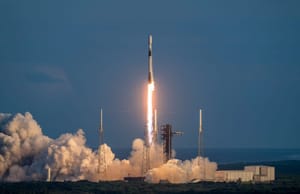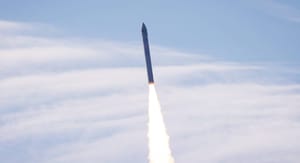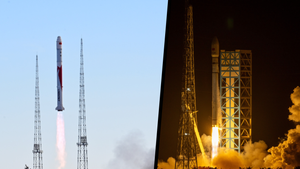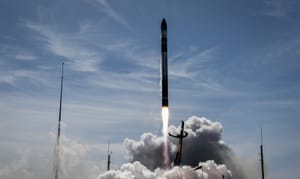
Falcon 9 has launched its second set of Galileo satellites on behalf of the European Galileo navigation system. This launch occurred from Space Launch Complex 40, in Flordia.
Liftoff! pic.twitter.com/yG7YajyF2k
— SpaceX (@SpaceX) September 17, 2024
Liftoff of the Galileo L13 mission atop of Falcon 9, via SpaceX on X.
The previous Galileo launch on Falcon 9 had the launch vehicle flying in an expendable configuration in April. With this mission, SpaceX attempted to recover the booster with the company saying:
"Rapid and reliable reusability is key to making life multiplanetary – every mission is an opportunity to learn and inform future missions. During the Galileo L12 mission earlier this year, the Falcon 9 booster was expended to provide the additional performance needed to deliver the payload to its orbit. Data from that mission informed subtle design and operational changes, including mass reductions and trajectory adjustments, that will allow us to safely recover and reuse this booster. Falcon 9 is ready to safely deliver Galileo L13 to orbit and return to the droneship in the Atlantic Ocean."
"The booster reentry trajectory will result in higher heating and dynamic pressure on the booster than many of our historical landings. Although the reentry conditions are on the higher end of past missions, they are still acceptable. This landing attempt will test the bounds of recovery, giving us valuable data on the design of the vehicle in these elevated entry conditions. This in turn will help us innovate on future vehicle designs to make our vehicles more robust and rapidly reusable while expanding into more challenging reentry conditions."
For this challenging landing, booster B1067 was flying for the twenty-second time. Ascent for this booster was nominal, with it supporting the Galileo L13 mission up to staging.
After staging, B1067 performed its re-entry burn at the fastest speed ever experienced by a Falcon 9 booster before continuing on its unpowered descent. B1067 then lit its engines once again to land on the drone ship 'Just Read The Instructions' downrange.
Falcon 9’s first stage lands on the Just Read the Instructions droneship pic.twitter.com/YhH3fP7svM
— SpaceX (@SpaceX) September 17, 2024
Booster B1067 landing on 'Just Read The Instructions' after the fastest re-entry of a Falcon 9 booster, via SpaceX on X.
Two Galileo satellites were on top of Falcon 9 for this launch. To deliver those satellites into medium Earth orbit, the second-stage was equipped with a mission extension kit to keep the propellants warm over several hours in space.

What is Galileo?
Galileo is the European Union-funded alternative to the U.S.-controlled Global Positioning System (GPS), the Russian-controlled GLONASS (Global Navigation Satellite System), and the People's Republic of China-controlled BeiDou Navigation Satellite System. The Galileo system is claimed to be the most precise satellite navigation system.
Galileo gets its funding directly from the European Union and is managed by the European Commission. The European Space Agency is responsible for the design, development, and qualification of the space and ground systems, as well as launch procurement. The European Union Agency for the Space Programme (EUSPA) is responsible for overseeing market share increase as well as acting as the service provider.
Before launch on September 17th, Galileo had thirty satellites in across three different medium Earth orbit planes. Twenty-four of the satellites are believed to be active, with six acting as spares in the event a satellite goes offline.
What is Falcon 9?
Falcon 9 is currently the world's only operational partially reusable medium-lift launch vehicle. The rocket is manufactured and operated by American aerospace company SpaceX. Falcon 9 currently launches from Vandenberg Space Force Base, in California, and Cape Canaveral, in Florida.
For recovery, Falcon 9 has four grid fins and four landing legs on the first-stage. The first stage either lands vertically on a drone ship or on a landing pad back at its launch site, landing back at the launch site causes a reduction in payload capacity.

SpaceX claims that Falcon 9 can send up to 22,800 kilograms into low Earth orbit when expended or 18,400 kilograms when reused. Similarly, it can send up to 8,300 kilograms into geosynchronous transfer orbit when expended or 5,500 kilograms when reused.
The first-stage is powered by nine Merlin 1D engines burning rocket-grade kerosene and liquid oxygen to generate 771 tons of thrust for up to two-minutes and forty-two seconds of burn time. The second-stage is powered by a single Merlin 1D vacuum engine burning rocket-grade kerosene and liquid oxygen to generate 95 tons of thrust for up to six minutes and thirty-seven seconds of burn time.
On the pad, the rocket is 70 meters tall with the first and second stages 3.7 meters in diameter, the fairing is 5.2 meters in diameter and tapers out from the top of the second-stage. Fully fuelled Falcon 9 weighs approximately 549,000 kilograms.



